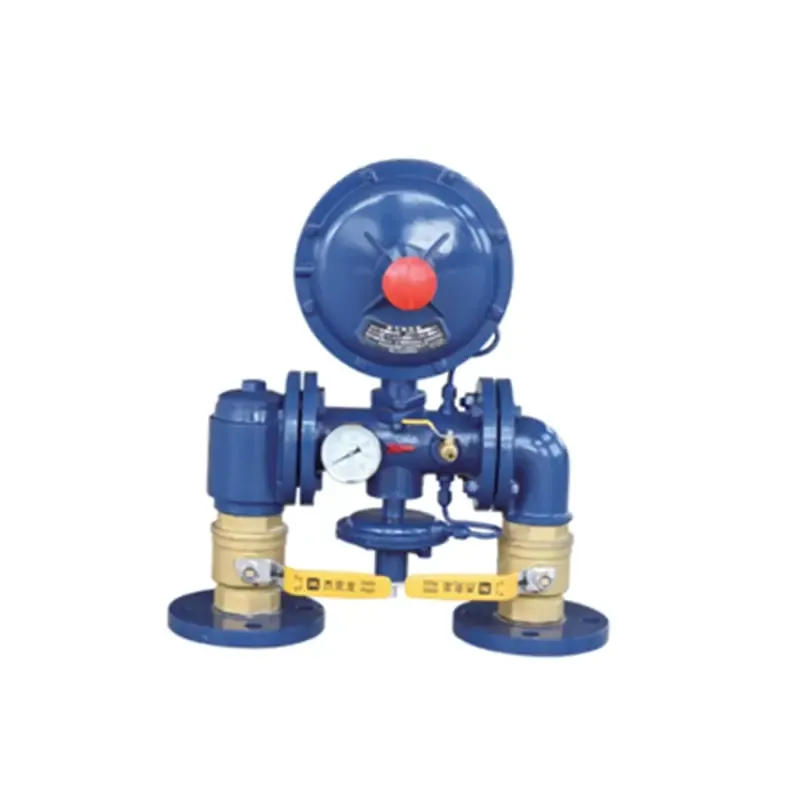
Nov . 06, 2024 03:25
Back to list
Design and Functionality of Pressure Regulating Skids in Industrial Applications
Understanding Pressure Regulating Skids A Comprehensive Overview
Pressure regulating skids play a vital role in various industrial processes, particularly in the oil and gas, chemical, and water treatment sectors. These systems are designed to maintain and regulate pressure levels within pipes and systems, ensuring safety, efficiency, and optimal function of the equipment and processes involved.
A pressure regulating skid essentially comprises a set of integrated components that work together to control and manage pressure fluctuations in liquids and gases. These skids are pre-engineered and tested units that can be readily installed at the site. They provide a compact solution that simplifies the management of pressure control in complex systems.
One of the primary components of a pressure regulating skid is the pressure regulator itself. Regulators act to maintain a constant output pressure despite variations in the input pressure. This is crucial in industries where pressure levels can fluctuate significantly due to changes in demand or sourcing conditions. By ensuring stable pressure, these regulators protect downstream equipment from damage, enhance process efficiency, and improve overall system reliability.
In addition to pressure regulators, skids may include various other components such as valves, gauges, flowmeters, and control systems. The inclusion of these elements allows for better monitoring and control of the entire system. For instance, pressure gauges provide real-time data on system pressure, helping operators make informed decisions about adjustments or maintenance needs. Flowmeters are pivotal in measuring the flow rate, allowing for precise control of the medium being processed.
pressure regulating skid

The skid design allows for modularity and flexibility. Depending on the specific needs of a facility, pressure regulating skids can be custom-built to accommodate certain requirements related to flow rate, pressure levels, and medium types. This adaptability is beneficial for industries that may face changing demands or are adopting new technologies requiring altered pressure specifications.
Safety is a paramount concern for any industrial operation, and pressure regulating skids contribute significantly to maintaining a secure work environment. By controlling and stabilizing pressure, these systems prevent over-pressurization, which can lead to catastrophic failures, leaks, or explosions. Furthermore, skids can be equipped with safety valves and alarms that provide additional protection, alerting operators to potential issues before they escalate.
Installation and maintenance of pressure regulating skids are generally straightforward due to their prefabricated nature. They arrive at the site as ready-to-install units, reducing the installation time and complexity often associated with building such systems from scratch. Regular maintenance is crucial to ensure these systems operate efficiently. Routine checks on the regulators, gauges, and valves help in identifying any wear and tear or abnormalities early, thus preventing unexpected downtimes and costly repairs.
The increasing demand for energy efficiency and sustainability in industrial processes has further driven the development of advanced pressure regulating skids. Modern designs may incorporate smart technology, enabling automated monitoring and control. These advanced systems can optimize pressure regulation through data analytics, learning from previous operational trends to enhance performance while minimizing energy use.
In conclusion, pressure regulating skids are indispensable components in multiple industrial applications. They contribute significantly to the safety, efficiency, and reliability of operations involving pressure-sensitive systems. As industries continue to evolve and embrace smart technologies, the role of pressure regulating skids will likely expand, further solidifying their importance in modern industrial processes. Their ability to streamline pressure management, enhance safety protocols, and adapt to changing requirements makes them a key asset in any facility relying on fluid and gas control systems.
Next:
Latest news
-
Safety Valve Spring-Loaded Design Overpressure ProtectionNewsJul.25,2025
-
Precision Voltage Regulator AC5 Accuracy Grade PerformanceNewsJul.25,2025
-
Natural Gas Pressure Regulating Skid Industrial Pipeline ApplicationsNewsJul.25,2025
-
Natural Gas Filter Stainless Steel Mesh Element DesignNewsJul.25,2025
-
Gas Pressure Regulator Valve Direct-Acting Spring-Loaded DesignNewsJul.25,2025
-
Decompression Equipment Multi-Stage Heat Exchange System DesignNewsJul.25,2025

